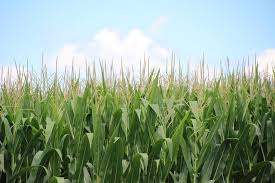A STUDY by researchers at the Yale School of the Environment (YSE) in the United States investigating the complex world of crop insurance suggests factoring in soil health when determining insurance premiums could be beneficial to both US farmers and insurers in the face of increased extreme weather events.
The increasing frequency and severity of extreme weather events like droughts and floods have taken a toll on the mid-western US in recent years, putting a major strain on the region’s farmers.
 From 2001 to 2010, the US Federal Crop Insurance Program, a government program created to protect farmers from crop loss, covered US$4.1 billion in damages; in 2011 alone, the program paid out US$10.8 billion.
From 2001 to 2010, the US Federal Crop Insurance Program, a government program created to protect farmers from crop loss, covered US$4.1 billion in damages; in 2011 alone, the program paid out US$10.8 billion.
With the largest US crop — corn — conservatively estimated to drop in yield anywhere from 20 to 80 per cent due to extreme weather exacerbated by climate change, insurance claims may skyrocket to levels that may not be sustainable.
But researchers from YSE found that by considering soil properties when determining insurance premiums could be beneficial to both farmers and insurers.
Soil organic matter
A study published in Environmental Research Letters uses years of data from the US Department of Agriculture (USDA) to outline how higher levels of soil organic matter improve water retention, which can mitigate crop yield losses from drought.
If insurers were to include oft-omitted data on soil health when determining premiums, the researchers say, insurance liabilities could drop considerably, while food security increases.
“It’s been commonly thought for a while that if you have more soil organic matter, you are more drought resilient,” PhD student at YSE and lead author of the study, Dan Kane, said.
“What we’re able to show is data backing this — and how much more resilient the crops can be in more severe weather conditions.”
Using USDA data on county-wide corn yields, the researchers determined that increasing soil organic matter by 1pc would reduce the average proportion of liabilities under severe drought conditions by 36pc.
It would also increase corn yields by roughly 35 bushels per acre, they estimate — roughly one ton.
Complex system
The current system for providing crop insurance in the US is complex.
The Federal Crop Insurance Program, which is partially subsidised by federal dollars, very strictly controls insurance premiums and which local insurers can sell and service insurance policies.
Kane said these premiums were typically determined by historical yield data, which might prove ineffective when faced with increasingly variable and extreme weather.
“There need to be other factors added to the equation, and the soil itself seems an obvious one for land-based agriculture,” co-author Mark Bradford said.
Source: Yale School of the Environment
PhD student at YSE, Dan Kane, was lead author of the study. Additional co-authors include Mark Bradford, professor of soils and ecosystem ecology at YSE; Emily Oldfield ’19 PhD, a postdoctoral fellow at the Environmental Defense Fund; Stephen Wood, a research scientist at YSE and The Nature Conservancy; and Emma Fuller, director of sustainability science at the farming software company Granular.
https://www.eurekalert.org/pub_releases/2021-03/ysot-tdo032221.php

HAVE YOUR SAY